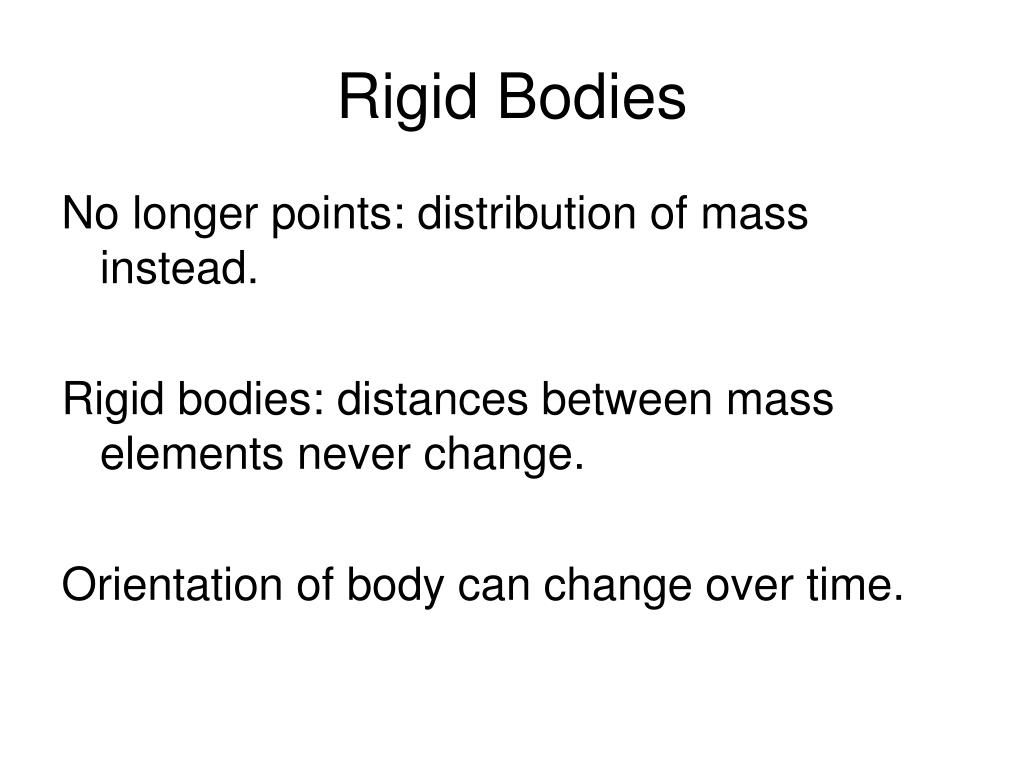
But as it goes, the point mass has no further information you’ve got to tell me where it is, and how fast it’s moving. It will do what’s called “translations.” It’ll go from a place to another place, maybe on a straight line, maybe on a curve. One is, if this had been a point mass, then the point mass will just go back and forth or up and down. In fact, we can characterize what it does using two expressions.

You take this you throw it up in the air you can see it does something fairly complicated. So, the dynamics of rigid bodies, in three dimensions, is fairly complicated, because what I want you to imagine now is not a point mass but some object with some shape, like this guy. A technical definition of a rigid body is that if you pick a couple of points, the distance between them does not change during the motion of the body. You can always bend anything, but we’ll take the approximation that we have in our hands, a completely rigid body. So, a rigid body is something that will not bend, will not change its shape when you apply forces to it, and one example could be a dime, a coin, or a meter stick. Professor Ramamurti Shankar: Okay, so this is a new topic called Physics or Dynamics of Rigid Bodies.

Introduction to Rigid Bodies Rotation of Rigid Bodies Fundamentals of Physics I PHYS 200 - Lecture 9 - Rotations, Part I: Dynamics of Rigid BodiesĬhapter 1.


 0 kommentar(er)
0 kommentar(er)
